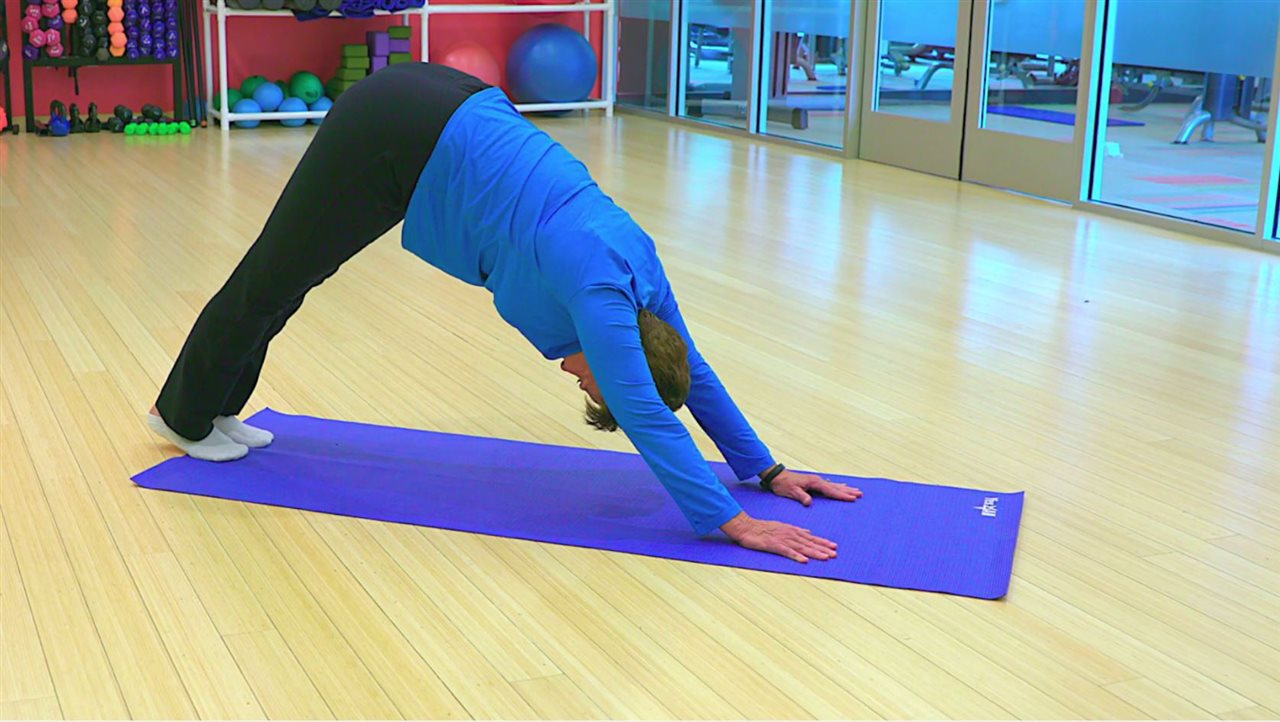Healthy Ways to Incorporate Fitness into Your Routine


Our bodies crave exercise at all ages, whether that means daily walks, fitness classes or a night of dancing. Although physical fitness may look different at age 65 than it did at 20, being active on a regular basis is still important to maintaining health and well-being.
Exercise helps establish better balance and flexibility and reduces falls. It improves sleep patterns and boosts mood. But it can be difficult to adapt our fitness routines or start new ones as our bodies change with age.
An overview at www.cdc.gov outlines weekly goals for amount and types of exercise for people over 65. Below are five exercises that can be modified for different skill levels and range of motion and can be done almost anywhere, anytime.
If you prefer working out in a gym environment, some health plans, including UnitedHealthcare, offer gym memberships at no additional cost. To learn more, visit UHCMedicarePlans.com.
Talk with your doctor about healthy ways to incorporate fitness into your routine. For individuals recovering from an injury, consider seeking advice from a physical therapist who may identify areas requiring special focus.
Squats: A familiar movement, bending and lifting to pick up a grandchild or a bag of groceries requires training to help avoid back injury. Fine-tune your form by trying this move that can build muscle strength in the glutes, abdomen and leg muscles. Begin by standing in front of a chair. With your weight in your heels and big toes, slightly drive your knees out, squeeze your glutes and lower yourself to the chair. To come up, lean forward slightly and push your knees out again. Repeat. If you’re able, try the move without the chair.
Push-ups: Drop and give us two, or 10 or 12. No matter how many push-ups you can muster, making time for this all-star exercise offers a high return on investment — building strength, balance and stability. For beginners, push-ups can be done against a tall counter, rather than all the way down to the floor. Stand with your palms on a counter and feet flat on the floor. Keeping your elbows tight to your side, lower your upper body slowly until it taps the counter. Hold the position for one second, come up and repeat. As you get stronger, you can progress to lower counters or tables until you’ve made it to the floor.
Single-leg balance drill: Boost your stability and balance by including this exercise into your at-home workout rotation. It can even be done while brushing teeth or washing dishes. Start by removing your shoes so your foot muscles can feel the floor. Stand with your feet flat on the floor, then shift your weight to your left leg and slowly bend your right knee, aiming to get your thigh parallel to the floor. Hold for five to 10 seconds, depending on your strength and stability, then, return that foot to the floor. Repeat this motion 10 times on the same leg, before switching to the opposite side. To increase difficulty, add some weight to one hand and transfer it from hand to hand while balancing. And don’t worry — a little wobble means you’re making those muscles work!
Planks: Side, center, forearm or — you guessed it — all of the above! Planking is a great way to engage your abdominals while strengthening and lengthening spine, back and shoulder muscles. Begin on all fours, with your hands under or slightly behind your shoulders. Extend your legs straight behind you and come up onto your toes. Keep your eyes focused downward, pull your belly button toward your spine and lower your midsection so your body forms a straight line. Beginners can drop their knees to the floor. Engage your core and hold the pose for 10 to 15 seconds. For side planks, start lying on your side, with knees stacked one on top of the other and bent so your heels are behind you. Rise up onto one elbow, stacked under your shoulder, with your palm spread. Squeeze your glutes and lift your hip. Look forward and raise your top hand to the ceiling.
Yoga: If you haven’t already, it’s time to give yoga a go. This holistic practice blending exercise and mindfulness is time-tested, has few age or ability barriers and offers benefits ranging from increasing flexibility to reducing falls. Two good starting positions are downward dog and warrior one. For downward dog, start the same way you start a plank but push your backside to the ceiling rather than toward the floor, so your legs are straight and your torso is straight. Keep your heels down and head relaxed. The more flexible you are, the closer together you can keep your feet. From downward dog, raise one leg and step it forward and place it between your hands. Walk your hands back, lower your back heel and slowly rise up. Bend your front knee and raise your hands above your head. You are now in warrior one.
—————————-
Plans are insured through UnitedHealthcare Insurance Company or one of its affiliated companies. For Medicare Advantage and Prescription Drug Plans: A Medicare Advantage organization with a Medicare contract and a Medicare-approved Part D sponsor. Enrollment in these plans depends on the plan’s contract renewal with Medicare. This information is not a complete description of benefits. Contact the plan for more information. Limitations, copayments, and restrictions may apply. Benefits, premium and/or copayments/coinsurance may change on January 1 of each year.
Consult your doctor prior to beginning an exercise program or making changes to your lifestyle or health care routine.




